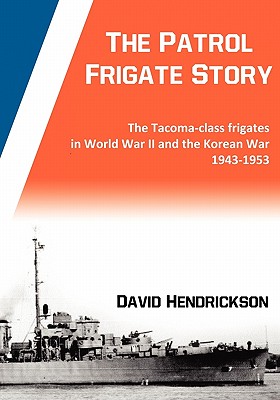In World War II, the author's ship the USS Albuquerque PF-7 endured a fourteen month tour of duty in the Bering Sea performing unending patrols, escorts and emergency steaming to ships in distress to the point that some aboard Albuquerque feared that they had crossed the line, forgotten by the Navy and destined to roam the seas a ghost ship in company with the Flying Dutchman until Judgment Day. Author David Hendrickson, former historian for the Patrol Frigate Reunion Association seeks to preserve the memory of the patrol frigates of WWII and the Korean War. One hundred frigates were authorized for construction in December 1942, four later cancelled, seventy-five manned by the Coast Guard, twenty-one loaned to the British Royal Navy as Colony-class frigates. The American frigates, designed after the British River-class frigates, were designated Tacoma-class, all named for small American cities. The Coast Guard-manned frigates served in every theater from the North Atlantic to the South Pacific. In the North Atlantic many served as weather ships, others assigned escort duty across the Atlantic. Twenty-one frigates served with the 7th Fleet Amphibious Division on the march from New Guinea to Leyte in the Philippines. Near the end of the war, twenty-eight frigates were transferred to the Soviet Union under Lend-Lease at the secret transfer base, Cold Bay, Alaska. All but one returned to the US Navy at Yokosuka, Japan, in late 1949. Fifteen were recommissioned for Korean War duty. Britain returned the colony-class frigates in 1946. The majority of frigates were scrapped after WWII, many sold or given under treaty to nations around the world, only to disappear over the years. About the Author Leaving college after the fall semester 1942, David Hendrickson joined the US Coast Guard in the spring of 1943. Following basic training and seamanship school on Government Island, (now Coast Guard Island, Alameda, California) and Navy deck petty officer training on Treasure Island, he was assigned to the newly commissioned USS Albuquerque PF-7, in San Francisco in December 1943. Upon completing shakedown, Albuquerque deployed to the Bering Sea/Aleutian Islands for a fourteen-month tour as lead ship of Escort Division 27. Leaving Albuquerque to the Russians under Lend-Lease in August 1945, Hendrickson served aboard USCG FS-34 and lastly aboard USS Admiral E. W. Eberle AP 123, until discharge, April 1946. Returning to college in 1946 led to a master's degree in history and










